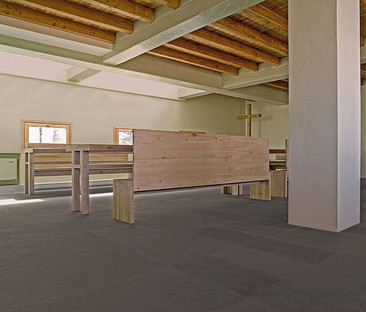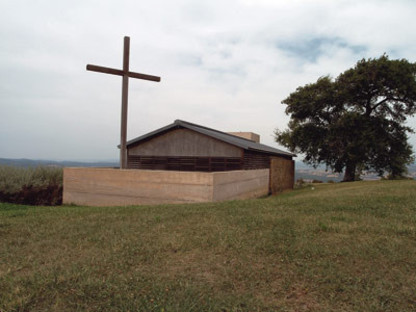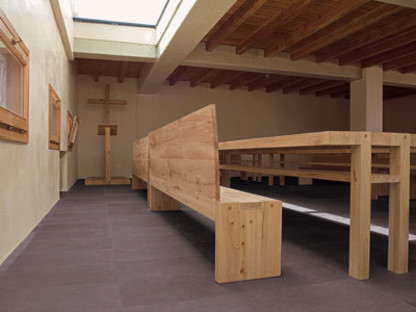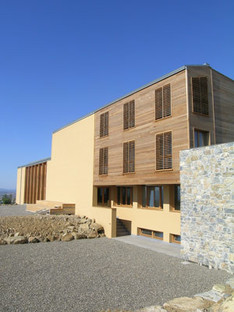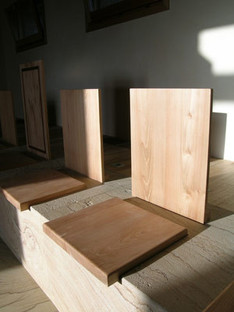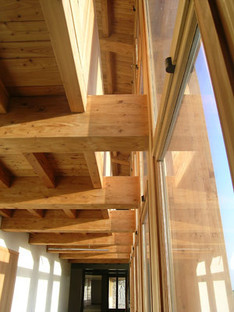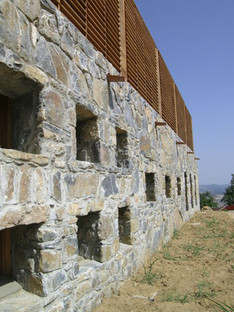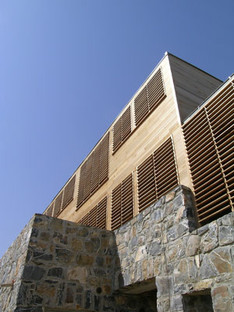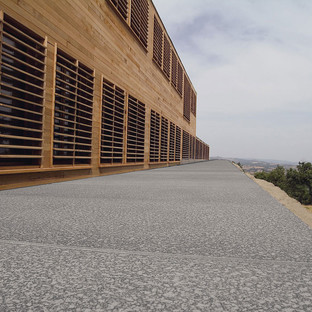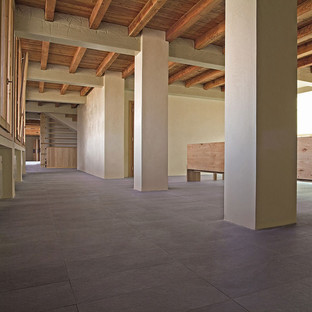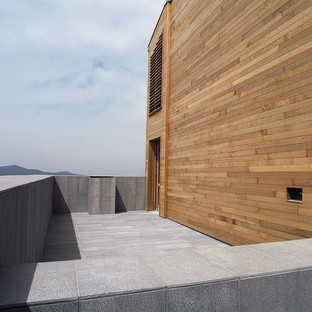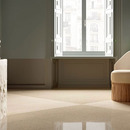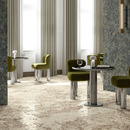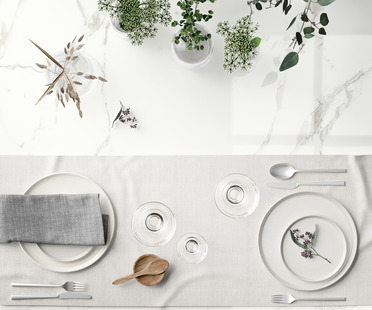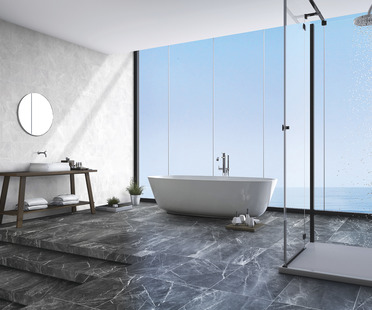04-12-2014
Stone floors for a religious building in Maremma
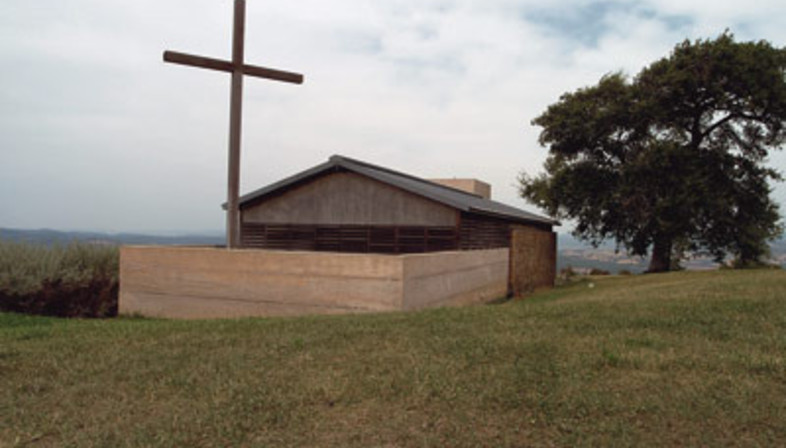


Stone-like porcelain floors are the ideal finish for any kind of building, even those that might appear the most unlikely destinations for materials of this type for covering indoor and outdoor surfaces. There are in fact cases in which stone-like floors are used in buildings with a long history and a highly traditional layout: religious buildings. Monasteries, churches and convents, to mention only a few, are often built in particularly scenic locations, incorporating use of stone-like ceramics to emphasise the horizontal surfaces in their interiors. Stone floors, an area in which artists and decorators have always given free rein to their decorative creativity, can now also be made with porcelain tiles, maintaining and even improving on the look and performance of natural stone.
The Benedictine Monastery of the Siloe Community, built by architect Edoardo Milesi, is located on a spectacular hilltop in the rolling hills of Tuscany. It is a simple, silent building which appears to emerge naturally out of the landscape around it. The architect paid attention to both the dictates of building regulations and the monastery’s natural surroundings, demonstrating respect for both. The building’s simple, essential compositional geometry is completed with surfaces of wood, stone, iron, glass and stone-like ceramics. The result is a complex that conveys a sense of emotion and history, architecture and ties with the land.
Construction began in 2001 with adaptation of a sheep enclosure, followed by the chapel of light, buried underground in the olive grove, concluding with the building of the eastern wing of the complex. The entrance to the Chapel of Light is identified by the two stone walls of the old sheepfold, while the bell tower is made of rough wood and the altar in the monastery is made of stone from Mount Amiata. The layout is typical of Cistercian monasteries, with a square courtyard surrounded by the chapter house, the visiting room, the kitchen, the refectory, the cells, the guest rooms, a conference hall, the library and the monastery church.
The common thread running through the entire project is harmony, reflected in the architectural composition and in the selection of materials. The layout of the volumes follows the lie of the land, with its discontinuities and differences in level. The result is a continual mimesis, comparison and dialogue between architecture and its natural surroundings.
In a design of such refinement and elegant simplicity, the decision to use Ariostea high-tech stone with a Bordeaux finish in the interior and a bush-hammered Pietra Cardoso finish on the exterior fits perfectly into the monastery’s natural surroundings. Stone-like ceramic tiles in the unusual hues of burgundy, brown and grey give the whole material consistency. The exterior with its Cardoso grey blends perfectly into the tradition of urban development of the Tuscan hills.
The construction is completed with a number of sustainable touches from bio-architecture, creating a fascinating building combining history with modernity and landscape.
Head architect: Edoardo Milesi
Team members: Laura Pizzi, Paolo Vimercati
Client: Siloe Monastery Community
Supervisor of work: Edoardo Milesi
COMPANIES MENTIONED:
Ariostea - Marble, Stone and Wood effect floor porcelain tiles
PRODUCTS MENTIONED:
Stone floors, Ariostea high-tech porcelain tiles
Stone floors, Ariostea high-tech porcelain tiles. Pietra ardesia bordeaux
Stone floors, Ariostea high-tech porcelain tiles. Pietra cardoso










